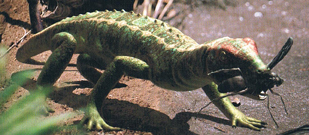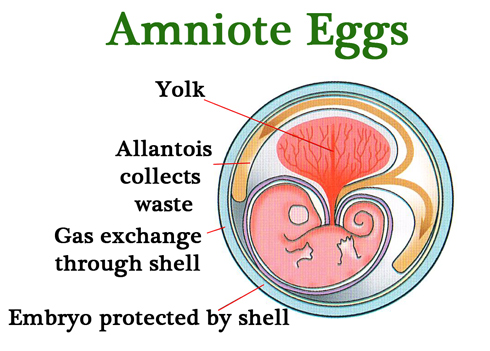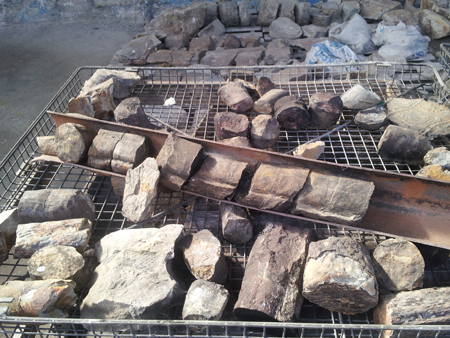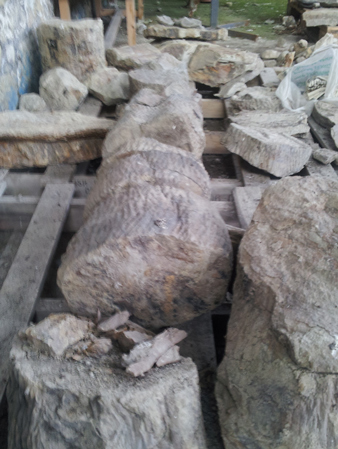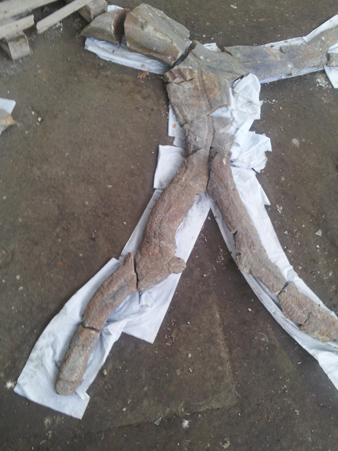Tropical North Wales – 300 Million Years Ago
Photographs of the Brymbo Steelworks Fossils
We were emailed today by the mum of one keen young palaeontologist who wanted to know all about Petrolacosaurus (pet-ro-lak-co-saw-rus). Our team member explained that this primitive reptile was not a dinosaur, although it was very distantly related to them. Petrolacosaurus lived at the very end of a geological period called the Carboniferous, at a little over forty centimetres in length, most of that tail, it was not the biggest reptile known from the fossil record – but its fossils are exceedingly important. It looked like a lizard and it scurried through the extensive tropical forests that dominated the world at that time in Earth’s history.
Petrolacosaurus
By the early Permian, Petrolacosaurus was extinct, it remains one of the earliest reptiles known, part of a rapidly diverging group, that unlike amphibians evolved amniotic eggs.
One of the Earliest Reptiles – Petrolacosaurus (P.kansensis)
Picture credit: BBC
Amniotes
Amniotic eggs have a semi-permeable shell that protects the embryo from drying out. A tough, internal membrane called the amnion surrounds the growing embryo as well as the yolk, the food source. Development of the embryo in a shelled egg meant that for the first time in history, the tetrapods were no longer tied to water to breed. We as mammals are amniotes, along with the birds and reptiles.
The Amniote Egg – Great Breakthrough for the Tetrapods
Fossils of the rare and exotic Petrolacosaurus come from faraway Kansas, other primitive reptiles are known from a site in Nova Scotia (more about Nova Scotia later), but did you know that in an abandoned steelworks, just north of Wrexham (North Wales), a team of dedicated researchers and volunteers are busy preserving the fossilised remains of a Carboniferous habitat?
Important Fossil Discovery
It is not all that often that we get to talk about globally significant scientific sites virtually on our doorstep, but that’s exactly what the “fossil forest” preserved at an abandoned steelworks at Brymbo is and we are delighted to hear that plans are being considered to develop this location, perhaps leading to a visitor centre to explain all about the local industry and the fossils to be found nearby. The Brymbo steelworks site preserves a forest and swamp environment from the Late Carboniferous, a time when the first reptiles scurried around hunting for insects and from time to time becoming prey themselves.
Top predators of the Late Carboniferous included spiders the size of dinner plates and three-metre-long amphibians. Although, no reptile fossils have been discovered to date, this location is just one of a handful of such sites around the world and it is likely to significantly improve our understanding of the palaeoecology of the Late Carboniferous of Europe.
Some of the Hundreds of Plant Fossils Collected at Brymbo
Picture credit: Rachel Mason
Tropical North Wales
The first fossils were discovered in 2005, when coal was being extracted from part of the Brymbo site. Everything Dinosaur team members wrote an article about the discoveries in 2009, when some of the fossil finds went on display to the public:
To read the article: Fossilised Plant Remains Go on Display.
The forest that existed 300 million years ago in North Wales was part of an extensive ecosystem that stretched across Europe and North America. The vast amount of peat that was formed as the plant remains became buried was, eventually, over time, turned into coal. This coal was to fuel the Industrial Revolution, so it could be argued that the 300-million-year-old forest gave rise to the steelworks. The forest would not have looked like any modern-day forest environment.
Giant Lycopsids adn Huge Sphenopsids
Giant forty-metre-high Lycopsids (club mosses dominated), along with huge Sphenopsids (horsetails) called Calamites. Nowhere else in Britain have Calamites fossils been found in such quantities. Many other types of plant are known from this site, including the now extinct seed ferns (Pteridosperms) and the true fern Syndneia, which was previously known just from one site in Canada.
Picture credit: Rachel Mason
Plants are very rarely preserved as whole fossils, but normally occur as isolated individual parts, such as leaves, stems, cones and roots. As these different parts of plants are found separately in the fossil record, they tend to be given their own individual binomial name. The roots system of lycopsids such as the huge Lepidodendron, had a branching structure and these root systems are often preserved along with the Knorria (the name for the base of the trunk). The term Lepidodendron, although used to describe the entire plant is actually the term that refers specifically to the upper part of the plant and its branches.
More Fossils from Brymbo (we suspect Stigmaria)
Picture credit: Rachel Mason
Now Back to Nova Scotia
We mentioned earlier primitive reptile fossils from Nova Scotia. Important information about life on Earth around 310 million years ago has been gained from studies of the coal deposits and the fossils they contain from Joggins in Nova Scotia. The fossils in theses coal measures represent an ecosystem that is probably a few million years older than the one represented by Brymbo.
The Joggins site preserves numerous tree-sized stumps just as at Brymbo. However, the fossilised remains of many different types of vertebrate (early tetrapods) have been found inside the sediment associated with these hollowed out tree stumps. It has been suggested that the hollow trunks of Lepidodendron plants became natural traps for many creatures, which has preserved evidence of the vertebrate fauna associated with these ancient forests and swamps.
No terrestrial vertebrate fossils have been found to date (as far as we know), from the Brymbo site, but importantly, Brymbo is a sheltered, inland location. Yes, it has the vagaries of the Welsh weather to contend with, however, the Coal Measures at Joggins are on the coast and this site is subjected to much harsher weather, frequent cliff falls and significant amounts of erosion.
In terms of its importance to geology and palaeontology, the Brymbo site with its plant, invertebrate and trace fossils, may turn out to be one of the most important fossil sites in the whole of Europe.
Visit Everything Dinosaur’s award-winning website: Everything Dinosaur.


